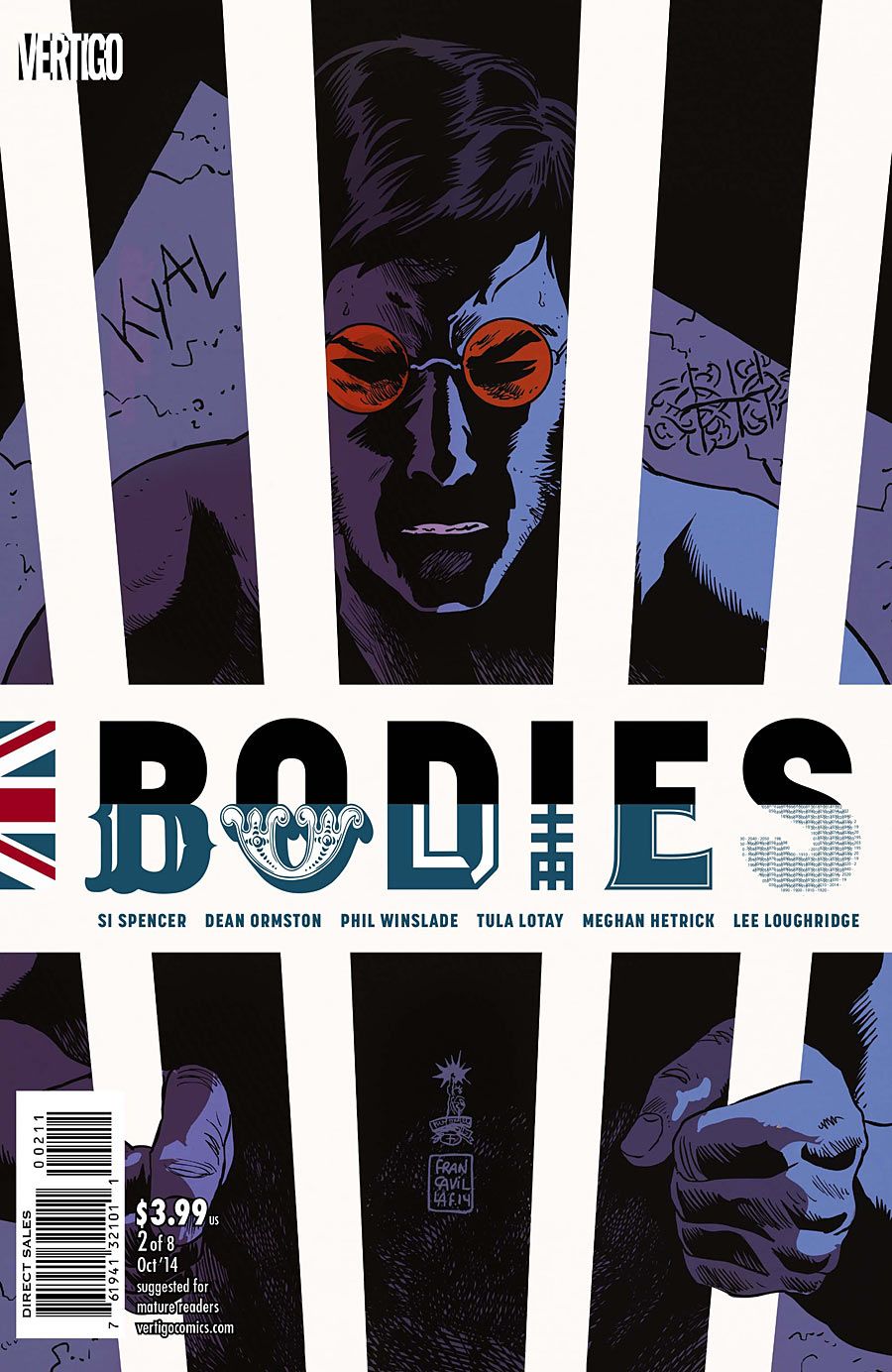There's no denying that Si Spencer's "Bodies" has a phenomenal concept, and so far the craft is on the level of the idea. In this time-traveling whodunit, the same mutilated victim drops into four different time periods, and the reader is left to wonder how he got there and how the crime will be solved. Admittedly, with four concurrent storylines, there isn't much movement in each individual issue, so it's taking some time to build. Issue #2, appropriately titled "Identity," creates more mysteries than plot movement, but it's shaping up an interesting world.
The four artists on the title -- Dean Ormston, Tula Lotay, Meghan Hetrick and Phil Winslade -- all complement and contrast each other's work. One of the great treats of "Bodies" is getting to explore four worlds in a single title, especially when each world feels this fully developed. Ormston's 1890 London is creepy and hesitant, a mix of fragile and gruesome that always feels on the brink of exploding. Lotay's 2050 is deliriously, delightfully weird, the kind of world where sun hats and zombies don't feel incongruous. Hetrick's 2014 is unexpectedly clean and light, with an almost futuristic shine, while for 1940, Winslade creates a believably, casually violent feel.
Colorist Lee Loughridge deserves a great deal of credit for pulling quadruple duty with such skill. He creates four very distinct and compelling atmospheres, none of which feel phoned in. 1890 appears in a creepy greyscale, with only shades of red and pink for accent. The effect creates both a sense of the era and a sense of menace. 1940 has perhaps the least inventive coloring effect, but it's visceral while still reading vintage. Loughridge makes post-apocalyptic London flat, sunny and lavender, like a whacky children's painting. Meanwhile modern London is, interestingly, the lightest and least grounded in physical space. White backgrounds and indistinct skylines abound.
As far as script, Si Spencer does some work to characterize his four detectives, but for three of them -- Hillinghead in 1890, Weissman in 1940 and Shahara in 2014 -- the characterization is primarily demographic. It's great to read a title with a gay man, a Jewish gangster and a Muslim woman as 75% of the protagonist team, but I'm excited to see them develop more as people in coming issues.
Their monologues are growing into distinct voices slowly, but they're not there yet. Spencer is cultivating Shahara's humor, Weissman's ruthless practicality, Hillinghead's caution and Maplewood's confused kindness, but with such limited page space, it's inevitable that the characterization feels incomplete.
Spencer does have a real ear, however, for dropping plot hints. In issue #2, phrases circle between the eras with almost poetic strangeness. It's lucky that they're so poetic, because they don't have a great deal of logic. I have no idea why or how these instances are connected, and I don't think Spencer is interested in giving hints just yet, but they're phrased and timed so beautifully and evocatively that I'm happy to keep reading anyway. That said, readers who like more answers might want to wait a few more issues before diving into "Bodies."
All told, "Bodies" #2 is an intriguing step forward for the series. I'm curious to see where the story goes. By nature of its structure, it will move more slowly than many other series, but the creative team continues to make me curious for the next issue.

